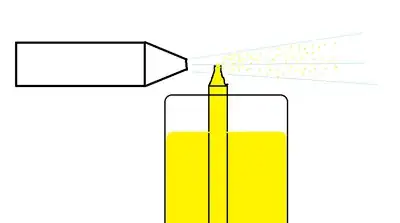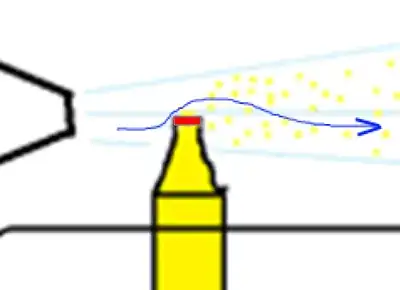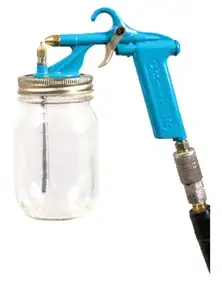I can tell you what the answer is:

Please take a look at the first picture. This is the nozzle I provided. The nozzle position should not be high, but relatively low. The straw should enter the main flow of the airflow sprayed by the nozzle.

Then let's take a look at the second picture, which is a partial view of the spray gun.
The blue curve represents the actual path of airflow passing through the top of the straw.
Let's look at the top of the straw again, the red line segment represents the top of the straw.
What is the relationship between this top and the airflow represented by the blue line? This is similar to the relationship between the surface of a wing and the airflow. This is also similar to the relationship between kites and wind. They have an angle. This is similar to the angle of attack of a wing. Due to this relationship, a low pressure will be generated in the upper part of the red line segment. A pressure lower than atmospheric pressure. So the water in the bottle will be sucked up.
So, the reason for the low pressure generated by the spray gun is similar to that of wings and kites.
So why does this relationship create low pressure? Please see this link:
https://physics.stackexchange.com/a/516003/176092



